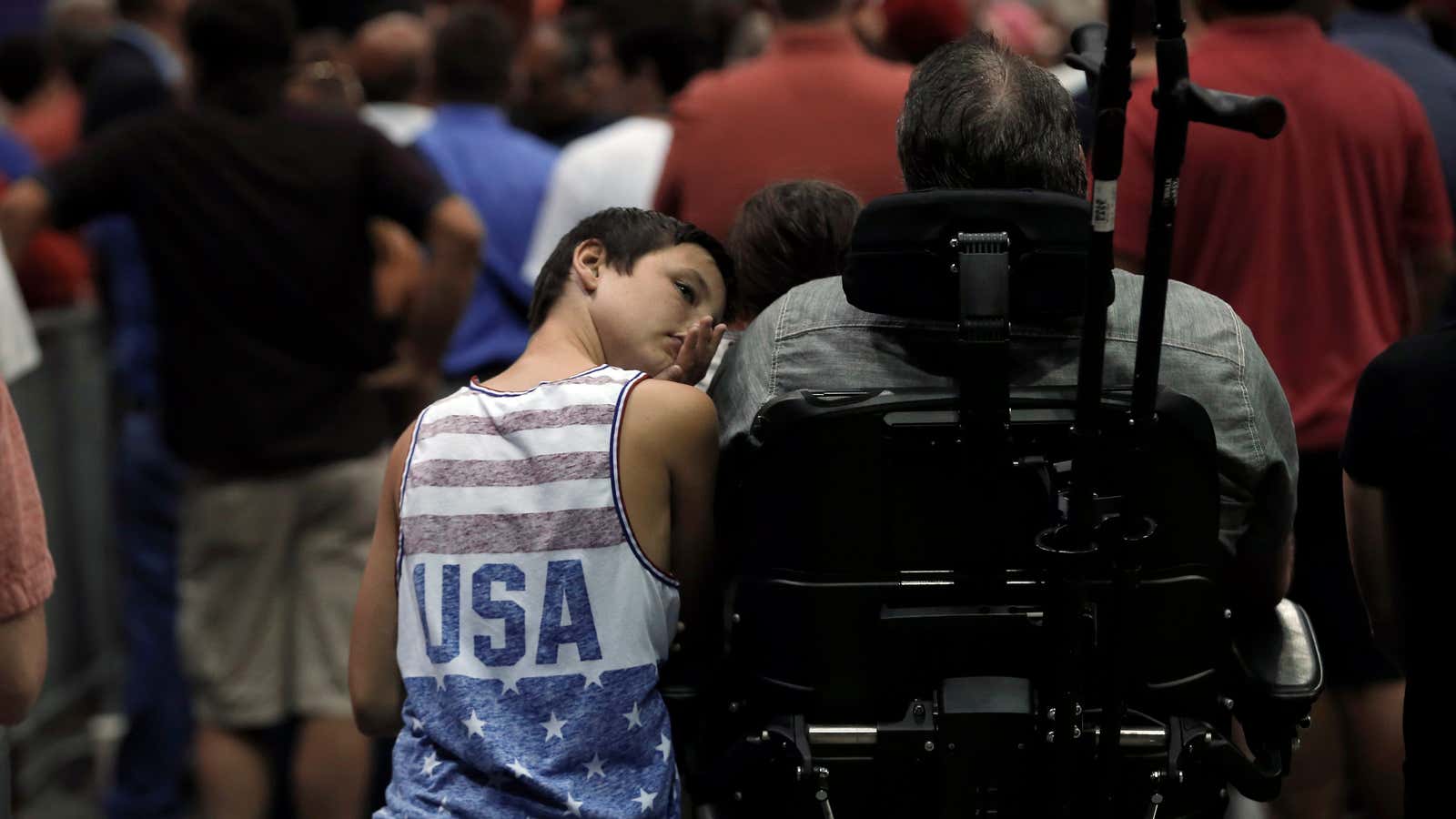July 26th marked the 29th anniversary of the Americans with Disabilities Act (ADA). While normally folks would ignore this year and focus on the act’s more momentous upcoming 30th anniversary, given that we are in the midst of a presidential campaign, this anniversary deserves our attention now.
To commemorate the day, multiple presidential candidates issued statements or discussed legacies in support for the community.
This was significant for us. But it was also largely symbolic.
While it was a nice gesture, absent new policy commitments or deliveries on promised staffing announcements, it was still just that—a gesture.
This year, the Disability Rights Center of New Hampshire issued a survey on disability issues for the 2020 presidential race. The survey, the first to be released so far, focuses on five areas of concern for the community: sub-minimum wage, inclusive education, mental health services, the domestic workforce shortage, and access to assistive technology.
The country has at least 61 million people living with disabilities, but in the three presidential candidate debates so far, we have not seen a single mention or inclusion in a debate answer.
One in four Americans lives with a disability, according to the CDC, and it impacts one in three families in the country. Conceptually, disability includes cancer survivors and people living with eating disorders, in addition to people who use mobility devices, who are Blind or Deaf, who have learning disabilities, who have neurological impairments, and numerous other conditions.
The disability community has always championed a passionate voice for advocacy, dating back to the 1930s when people formed the League of the Physically Handicapped and fought employment discrimination by the Works Progress Administration during the Great Depression.
In the modern era, we’ve seen political leadership from within our own community, including Illinois senator Tammy Duckworth, who fought to filibuster Title III of the ADA in 2018. There’s growing momentum around Arizona’s newly-elected state representative Jen Longdon, as the fact that she uses a wheelchair is shedding some light on issues of access.
And there have been moments where public attention has focused on disability concerns as part of the electorate this year. Back in June, the Miami Lighthouse for the Blind issued a scathing report that detailed the lack of website accessibility across all candidate campaigns.
What that means for the lay person is that a website’s information, images, videos, and navigation are unable to be accessed and translated by the software used by people who are Blind, Deaf, or who have learning or other disabilities, in order to be able to access information online.
At the same time, we see the intolerance that disabled folks face daily—even those who have been elected to office, as in the recent denial of reasonable accommodation to Wisconsin representative Jimmy Anderson. Anderson is paralyzed and uses a wheelchair, but he has been prohibited from calling in to meetings because it has been deemed “disrespectful.”
This shows that even though the ADA requires public service spaces to be accessible by law, in some places they still don’t want us here.
People with disabilities are feeling excluded. Every time a candidate rattles off a list of groups that are marginalized, we hold our breath to see if we will be included.
The majority of times we aren’t, even though we know that we exist in each of those other communities mentioned.
We saw an increase in voting rates among disabled voters in 2018. We are looking for policies that will improve our lives and acknowledge us as important members of society, and that will support us so that we can contribute ourselves. Candidates would do well to target us in their campaigns and policies.
But instead of feeling recognized as an important voting base, we feel insulted when candidates choose to address our families or caregivers, framing those of us with disabilities as objects of pity, or as burdens.
Watching the presidential debates so far, it feels as though the community’s relevance is dependent on our relationship with benevolent non-disabled people who care for us.
With the ADA turning almost 30, shouldn’t non-disabled people be used to us by now?
Our rights are now older than people who will be voting for this first time in 2020. But it’s clear we still need to fight to preserve them daily. So wee rally, we protest, we rage to preserve the ADA, the Affordable Care Act, Medicaid, or whatever statute it is that protects some facet of our right to be included in society.
It shouldn’t take disabled legislators for the community to get the attention it deserves. When the House of Representatives passed the bill last year to repeal Title III, it was a victory for our community. But in many ways it also symbolically codified the ongoing treatment of disabled Americans as fakers, takers, and moneymakers.
When we see policymakers talk glowingly of our strength, our power, in times of need (like in the ACA fight) and then ignore us during debates, it feels like we’re contending with junior-high school bullies who copy your homework and then won’t let you sit at their table in the cafeteria.
There is not one issue that has been discussed thus far that does not directly impact the disability community: The crisis at the border is a disability rights issue. Lead contamination is a disability issue. The entire conversation around “Medicare for All” proposals is negligent for ignoring the inclusion of long-term supports and services as a core component.
Many candidates have people with disabilities in their own families—just like one in three families in the country. If nothing else, their experience with the programs and policies that affect them should inform their perspective and prompt them to buy in to the values of the community.
